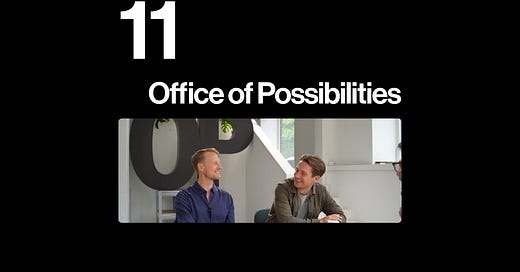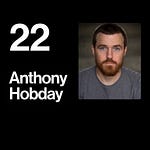Supported by:
Daylight Computer: the healthiest computer
Baked Graphics: amazing 3D video mockups
Framer: the best website builder for designers
ProtoPie: the best hi-fidelity interface prototyping tool
OP.™ – short for Office of Possibilities – is a multi-disciplinary design studio that creates objects and spaces based on well-informed strategic ideas. Their competences span architecture, art direction, exhibition design, industrial design, brand strategy, graphic design and innovation strategy.
I've been following them since they moved into their Gothenburg studio, in the same building where I was living at the time. Since then, they have built a formidable portfolio of projects involving brand identity, product design, architecture, exhibition design, and more; with clients such as Volvo, Ikea, H&M, Voi Scooters, and Elektron Music Machines.
For this conversation, I went back to my old neighborhood and sat down with co-founders Petter Hillinge and Caspar Andrén. We talked about their personal journeys that led to owning a design studio together; how they grew their company 100% during a pandemic (partly due to their experience in functioning as a remote, distributed team); how they communicate, sell, and execute truly multi-disciplinary work; the great designers that they have learned from; the tensions between business and creativity; and other topics that shed light on their practice of design.
Books, Links, and Resources from the Conversation
Alvar Aalto: https://en.wikipedia.org/wiki/Alvar_Aalto
BIG (Bjarke Ingels Group): https://big.dk
Charles and Ray Eames: https://en.wikipedia.org/wiki/Charles_and_Ray_Eames
Deglabbet: https://www.deglabbet.se
Forsman & Bodenfors: https://forsman.co
Grid Systems in Graphic Design by Josef Müller-Brockmann: https://geni.us/grid-systems
Gunnar Asplund: https://en.wikipedia.org/wiki/Gunnar_Asplund
Josef Müller-Brockman: https://en.wikipedia.org/wiki/Josef_M%C3%BCller-Brockmann
Kilo: https://kilodesign.dk
Louisiana Museum of Modern Art: https://louisiana.dk
Ogilvy on Advertising by David Ogilvy: https://geni.us/ogilvy-on
Pål Svensson: http://www.palsvensson.se
Sigurd Lewerentz: https://en.wikipedia.org/wiki/Sigurd_Lewerentz
Skewed: https://skewed.com
Sprint by Jake Knapp: https://geni.us/sprint-dd
The Futur: https://thefutur.com












Share this post